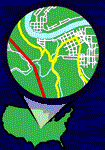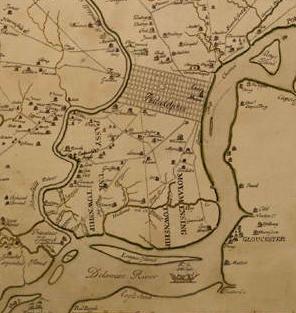How to Fund
Transportation
That the public lands
of the United States belong to the people, and should not be sold to
individuals, nor granted to corporations, but should be held as a
sacred trust for the benefit of the people, and should be granted in
limited quantities, free of cost, to landless settlers.
- Free
Soil Party Platorm, 1852, incorporated with slight
modification into the Republican
Party platform of 1860
The veins through
which the life current of the country flows do not belong to the system
to which they are indispensable. Fancy a man whose arteries do not
belong to him, whose heart-beats are directed by another, by one over
whom he has no control, and the reader will form an idea of the
condition of this country, with the public highways in the hands of
corporations, acting independent of and, in some instances, in defiance
of the government.
The railroad and
telegraph system of the country are public highways. They take the
place of the canals, water-ways, and government roads of fifty years
ago. They have made it possible for the large cities to absorb the
mechanic and laboring population of the nation. All except tillers of
the soil are being allured into the cities, and soon there will be no
middle ground. It is the tendency of the times to build up cities, and
I see no great harm to follow if the connection between city and
country, between farm and factory, is steady, strong, and satisfactory
to both. It is not
satisfactory to-day, and will not be until those
for whom the railroads were built control them.
The Mississippi river
is a great national highway, and every year Congress makes
appropriations for its improvement. It belongs to no one, and is used
by all. It is public property. The man owning land along its banks can
not levy a tax on all that passes his door in boat or shallop. No
corporation would dare to absorb or control it, for the reason that it
is the means whereby the common business of the country on either side
of it for miles is carried....
These questions of
land and transportation go hand in hand, and are so closely allied that
they become one when studied. Being one question their proper solution
will cement, in indissoluble bond, the interests of the workers in
town, city, and country, whether their names are written as farmers,
mechanics, or laborers.
- Terence Powderly,
Thirty Years
of Labor, Chapter 8, "Land,
Telegraphy and Railroads"
Fundamentally, all law
recognizes the right to eminent domain, to take the portion of any
human being for the welfare of the public -- that no man's claim to any
portion of the earth shall stand in the way of the common good. This is
a common law, but in practice it only applies where a rich railroad
wants to get the land of some poor widow.
- Clarence Darrow, "How
to Abolish Unfair Taxation"
When the moguls
thought of profit, they did not think of the Penn
Central or the other railroads the company owned, like the Lehigh
Valley, or the Pittsburgh & Lake Erie or the Detroit, Toledo
&
Ironton. They thought of the rich parcels of land the railroad owned in
Chicago and Cleveland and Detroid and Pittsburgh, land that made the
railroad the largest real estate company in the nation.
- The Wreck of the Penn Central,
by By Joseph R. Daughen and
Peter Binzen, page 138
The merchant, the manufacturer, real-estate dealer and mechanic are all
benefited by whatever will tend to reduce the cost of car fare, gas,
water, garbage collection and taxes, while the owner of stock in a
street railway, gas or water company is interested to in have the cost
of these services as high as may be.... [Franchise owners] make a daily, hourly business of politics, raising up men in this
ward or that, identifying them with their machines, promoting them from
delegates to city conventions to city offices. They are always at work
protecting and building up a business interest that lives on through
its political strength. The watered securities of franchise
corporations are politics capitalized.
Regulation by city or commission will not correct these evils. The
more stringent the regulation, the more bitter will be the civic strife.
Only through municipal ownership can the gulf which divides the
community into a small dominant class on one side and the unorganized people on the other be
bridged; only through municipal ownership can the talent of the city be
identified with the interests of the city; only by making men's
ambitions and pecuniary interests identical with the welfare of the city
can civil warfare be ended. - Tom Johnson, Streetcar monopolist and mayor of Cleveland So
long as the State stands as an impersonal mechanism which can confer an
economic advantage at the mere touch of a button, men will seek by all
sorts of ways to get at the button, because law-made property is
acquired with less exertion than labour-made property. It is easier to
push the button and get some form of State-created monopoly like a
land-title, a tariff, concession or franchise, and pocket the proceeds,
than it is to accumulate the same amount by work. Thus a political
theory that admits any positive intervention by the State upon the
individual has always this natural law to reckon with.
|
Saving Communities
Bringing
prosperity through freedom, equality, local
autonomy and respect for the commons.
|
How to Fund Transportation
Nothing is more
important to civilization than transportation and communication, and,
apart from direct tyranny and oppression, nothing is more harmful to
the well being of a society than an irrational transportation system.
Trade is essential to economic vitality, and transportation is
essential to trade. This essay examines the irrationality of our
transportation system, the consequences of that irrationality, and,
most importantly, how our funding methods drive that irrationality. It also examines the
right to travel, established under common law, reasserted in the Magna
Carta, and recently eroded in the United States.
Today transportation is in crisis, partly because we
have ignored long recognized common-law principles. We
sketch the history of transportation only to illustrate
important principles that can save us from the current crisis.
Pittsburgh and Philadelhia, Pennsylvania are the primary examples we
use for discussing local transit, only because the author is from
Pittsburgh and has given seminars on transportation funding in
Philadelphia, and has better access to sources and examples in these
cities. Similar patterns apply in most US cities.
We will make the case that transprotation systems, and
particularly the rights of way themselves, should be publicly
owned and operated, and that they should be funded from a tax on the
land values they create. These principles apply
to all transportation systems, from airports to elevators, from
highways to canals and river locks. Our failure to adhere to these
principles throughout our history has turned our transportation systems
into opportunites for plunder and corruption.
Transportation and Land Use
Transportation dictates land use. Before the rise of
mechanization, travel over land was limited to the speeds and distances
that people and animals could walk, and freight was limited to what
they could pull. Towns and villages developed near waterways, and
profitable farms had to be located within hauling distance of the towns
and villages. Land just beyond the edge of towns had no value other
than farm value, and land more than a few miles from towns was not even
worth farming. The size of cities was therefore limited to the number
of people that could be
fed by nearby farms, except where food could be shipped by river. River
transporation was mostly for freight, and water freight (especially
crops, timber and minerals) mostly travelled downstream.
Trade between distant communities became possible
once sailing vessels harnessed wind power. Maritime empires
came to dominate earlier land-based empires, first along the
Mediterranean, where calm waters accommodated smaller, more primitive
sailing technology, and then along the Atlantic Coast of Europe, once
people learned to build and sail larger, ocean-worthy vessels. Ocean
trade made larger cities possible.
The American colonies developed after sailing technlogy
was well established, but before the advent of powered engines. Almost
all colonial cities developed next to natural harbors. New York, which
had the highest capacity deep-water harbor, has naturally become the
largest city in the United States.
The location for Philadelphia was chosen based on its
access to both the Delaware and Schuylkill Rivers. Because the banks
where these rivers converged were swamplands, the city developed where
the rivers came closest to one another.
Transportation and Land Value
The most important determinant of land value is access
to population centers, and the best access to population centers is in
the population centers themselves. Population centers developed at
crossroads, confluences of navigable rivers,
and at harbors of oceans, seas and large lakes. The major exceptions
were where precious minerals were discovered; even in these exceptional
cases, establishing transportation became an immediate priority.
Land value increases with utility, but also with
scarcity. That is, land of similar qualities will be more expensive in
a region where good land is scarce. Holding land out of use increases
the scarcity of land that is available for use, artificially increasing
the price of land. In Europe, enclosure acts converted feudal lords
into land owners and crowded non-nobles into cities and towns. This
crowding drove rents up and wages down, triggering the poverty
associated with the Industrial Revolution.
It also triggered massive migration to North America,
where there was so much land that its monopolization would not become
as advanced as
in Europe for centuries. As land was so much cheaper, wages
went much further. Workers and entrepreneurs prospered
together. This period of low-rent, high-wage, high-profit prosperity
occured under both minimal government and minimal rents, in stark
contrast with the misery of workers in high-rent Europe. This era of
worker prosperity made Americans more receptive to the idea of
free-enterprise capitalism.
Migration was also accelerated by the ocean steamer,
which reduced ocean crossing times from six weeks down to six days.
However, the United States had the same basic land tenure system as
England, and speculators were rapidly grabbing up land, with the oldest
coastal cities becoming the most monopolized and the most expensive.
Transportation to more affordable inland settlements was still
expensive, and most immigrants arrived with barely enough money to get
a start in the coastal cities.
This rapid influx of stranded immigrants led
to sweatshop conditions and low wages in American port cities, but even
these wages were higher than in European cities. [Sombart]
Horace Greeley's
advice, "Go west, young man," was in recognition that wages
and opportunities are greater where land is less monopolized. The
United
States continued to be the "land of opportunity" until the frontier
closed. New transportation technology also brought rural land onto the
market and helped slow the rise of urban rents, especially with the
advent of the automobile.
Rail lines turned idle farmland into affluent
neighborhoods. Railroad executives and their cronies bought up as much
land as they could before the public knew where the new lines would
run. Philadelphia millionaires built "summer homes" at the end of the
Reading Railroad's Chestnut Hill line, and Chestnut hill is
still the most affluent
neighborhood in Philadelphia.
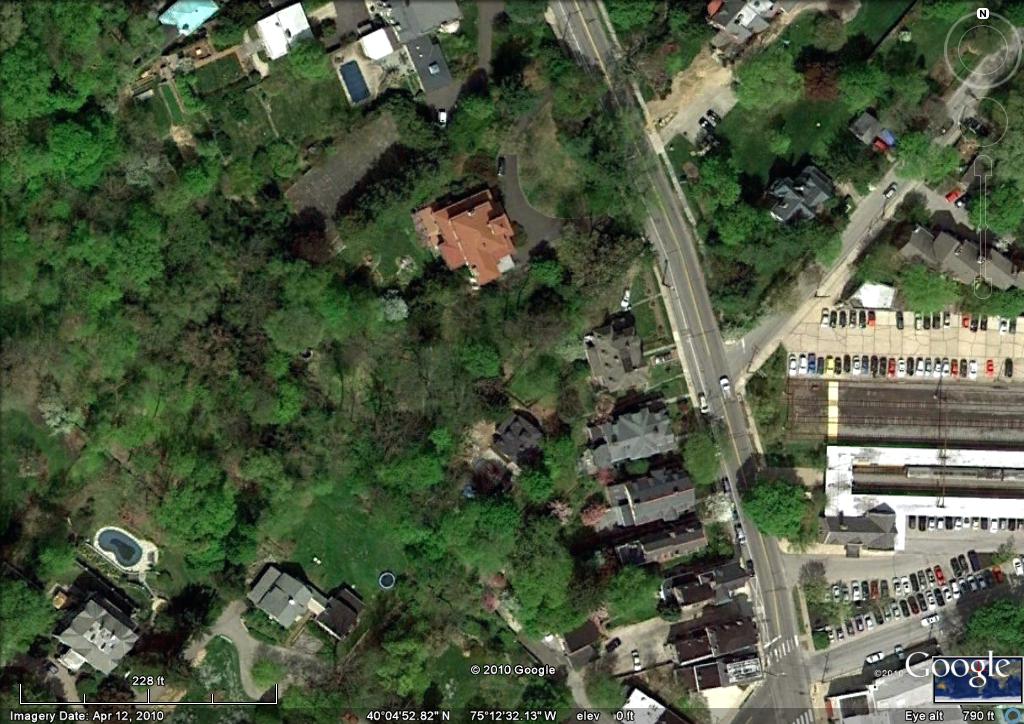
Some
of the Chestnut
Hill Mansions near Reading Station
Even
more affluent is Sewickley Heights, upwind of then-smoky Pittsburgh,
and just a short carriage ride from the Sewickley Station of the
Pennsylvania Railroad's commuter line. Although passenger trains no
longer to run Sewickley, it is still the most affluent neighborhood in
Pittsburgh's Allegheny County.
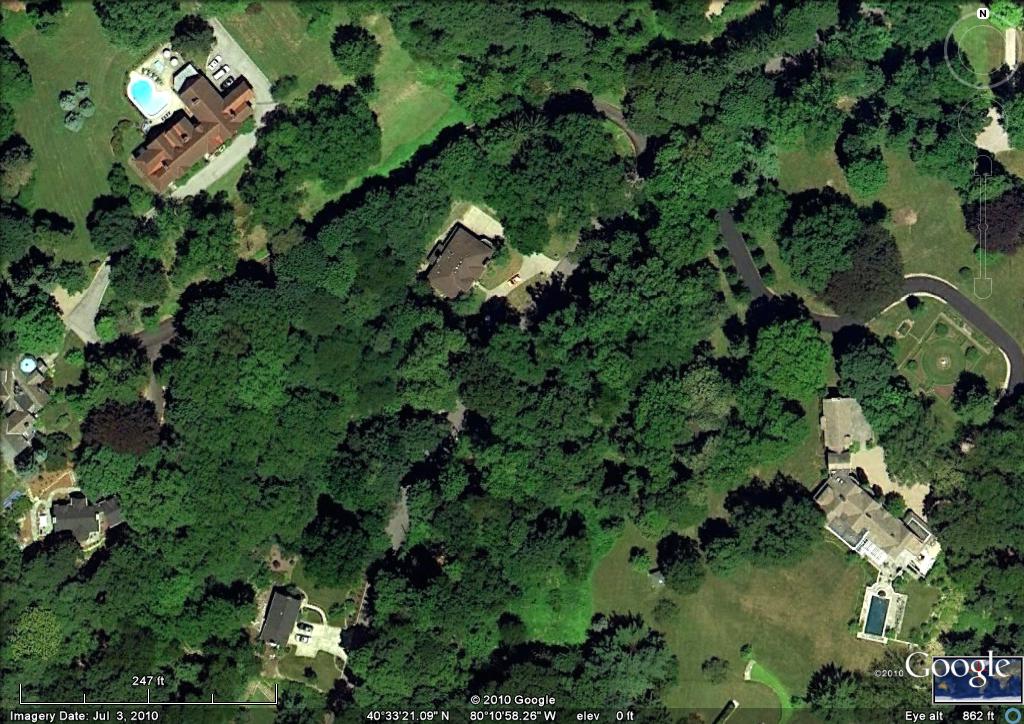
Speculation, transportation and monopoly
Canals, railroads, trolley lines, roads and
airports can dramatically increase the value of land served by them.
Those who who had acquired land before it was served by new
transportation systems reap what economists call "unearned increments"
in land value. The desire for such windfalls has perverted
transportation policy throughout history, especially when those who
have reaped the windfalls either had not paid for the transportation or
were
granted artificial privileges related to the transportation.
Transportation lines are "natural" monopolies in that
they require exclusive right-of-way grants. Monopoly prices are not
limited by competition, but by "whatever the market will bear."
Privately owned transportation lines are notorious for price-gouging
those who depend on the lines, to the detriment of the communities
served. In contrast, publicly owned lines are often subsidized in order
to keep rates down and encourage more people to use the lines. This is
rational if the subsidy increases land values by more than its cost. We
will dicuss this more in the context of the current transportation
crisis.
The era of private railroads and trolleys
Nothing exposes the folly of granting licensed
monopolies like the history of railroads and trolleys in the United
States.
Before the Civil War, most American roads and canals
were publicly
owned, but railroad rights of way were turned over to private
corporations following the English model. Most countries in continental
Europe retained ownership of the rights of way, sometimes allowing
private companies to maintain the rail and ballast on long-term leases
as common carriers. Competing companies could run rolling stock under
management of the leaseholding company. This arrangement made it easier
to nationalize railroads in continental Europe than in England and the
United States, where railroads hold right-of-way privileges in
perpetuity.
The Republican Party was formed as a coalition of
several reform parties. The largest of them was the Free Soil Party,
which opposed large land grants and instead advocated that land be
given in small grants to actual settlers. However, the Free Soil Party
also advocated the constrution of a transcontinental railroad to
provide more access to land, and the Republican party
embraced both positions. This attracted unscrupulous financiers to the
Republican
Party. The demands of the Civil War made the government so dependent on
financiers and industrialsts that, by the time the war was over, this
party of reformers was in the hands of the interests it had opposed.
The rush to build railroad empires was so great and the
politial influence of bankers and speculators so strong that the
country was rocked by scandal after scandal, involving massive land
grants and inflated subsidies, bribes and kickbacks to elected
officials, price gouging of farmers, ranchers and settlers, rate wars
designed to eliminate what little competition existed, and preferential
rates for "connected" customers. John D. Rockefeller's oil empire was
built by using his railroad power to see that competitors were
overcharged.
Henry George, who would become the most famous economic
reformer of the 1880s, began his reformist career in 1868 San
Francisco, with the article "What the
Railroad Will Bring Us," and Terence Powderly, as head of the
Knights of Labor, would launch the US labor movement on a platform
opposing land
monopoly, railroad and telegraph monopolies, and banking
privilege. George and Powderly are featured below
in a front-cover
cartoon for Judge
Magazine, for taking on railroad monopolist Jay Gould.
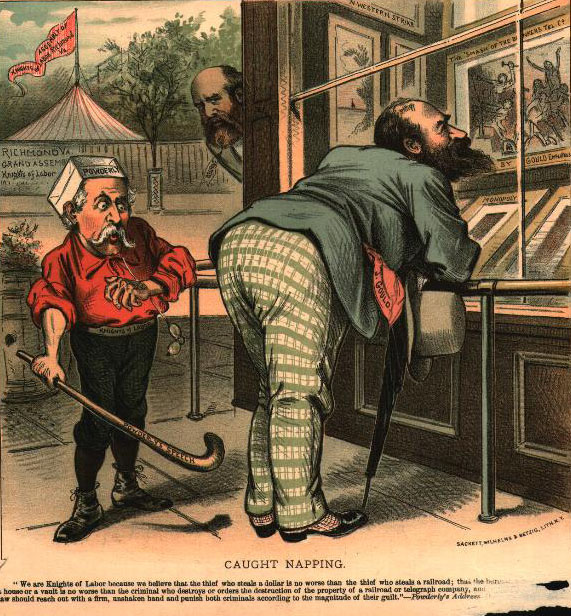
In
the above cartoon,
while Jay Gould is admiring his monopolies and his smashed competition
and Henry George looks on, Terence Powderly is poised to give him a
good whacking with a cane labelled "Powderly's Speech."
The caption
reads: CAUGHT NAPPING: "We are Knights of Labor because we
believe that the thief who steals a dollar is no worse than the thief
who steals a railroad... and that the law should reach out with a firm,
unshaken hand and punish both criminals according to the magnitude of
their guilt." -
Powderly's Address
In the era of political machines, "patronage" meant
contract and franchise
patronage. The most lucrative franchises for New Yorks's Tammany Hall
bosses and their backers were streetcar franchises.
Overcharging for crowded
streetcars was so lucrative that the streetcar companies forced delays
in
construction of the New York subway system for more than a decade.
Finally, after the Belmont Company had effectively taken over most of
the city's streetcars, it engineered a deal where the city paid for the
construction of the subway and then turned it over to Belmont to run
for fifty years as a private monopoly. [McClure's]
The first major contract was with the Pennsylvania
Railroad to excavate the city and bring trains into Pennsylvania
Station. [History
of Tammany Hall]
Pennsylvania's major cities were even worse in some
ways, because the city, state and national governments had all been
under the same political party for over forty years and all
backed by the same corporate interests, and all cooperating with one
another. Like New York's Tammany Hall, Pennsylvania's machines were
based on contract and franchise patronage, with railroads leading the
way.
In the State ring are the
great corporations, the Standard Oil Company, Cramp's Ship Yard, and
the steel companies with the Pennsylvania Railroad at their head, and
all the local transportation and other public utility companies
following after. They get franchises, privileges, exemptions, etc.;
they have helped finance Quay through deals; the Pennsylvania paid
Martin, Quay said once, a large yearly salary; the Cramps get contracts
to build United States ships, and for years have been begging for a
subsidy on home-made ships. The officers, directors, and stockholders
of these companies, with their friends, their bankers and their
employees are of the organization. Better still, one of the local
bosses of Philadelphia told me he could always give a worker a job with
these companies, just as he could in a city department, or in the mint,
or post office.... The traction companies, which bought their
way from beginning to end by corruption, which have always been in the
ring and whose financiers have usually shared in other big ring deals,
adopted early the policy of bribing the people with" small blocks of
stock." ["Philadelphia:
Corrupt and Contented," by Lincoln Steffens]
Pittsburgh's experience was similar.
The railroads began the corruption of this
city. There "always was some dishonesty" as the oldest public men I
talked with said, but it was occasional and criminal till the first
great corporation made it business-like and respectable. The
municipality issued bonds to help the infant railroads to develop the
city, and, as in so many American cities, the roads repudiated the debt
and interest and went into politics. The Pennsylvania Railroad was in
the system from the start, and as the other roads came in and found the
city government bought up by those before them, they purchased their
rights of way by outbribing the older roads, then joined the ring to
acquire more rights for themselves and to keep belated rivals out....
The city paid in all sorts of rights and privileges, streets, bridges,
etc., and in certain periods the business interests of the city were
sacrificed to leave the Pennsylvania Road in exclusive control of a
freight traffic it could not handle alone.["Pittsburg:
A City Ashamed" Steffens]
Mayor Magee and his partner, Flinn, were not content
with giving
plums to cronies. Rather, they took the best plums (including streetcar
lines) for themselves.
Magee took the financial and corporate branch,
turning
the streets to his uses, delivering to himself franchises, and building
and running railways. Flinn went in for public contracts for his firm,
Booth & Flinn, Limited, and his branch boomed. Old streets were
repaired, new ones laid out; whole districts were improved, parks made,
and buildings erected. The improvement of their city went on at a great
rate for years, with only one period of cessation, and the period of
economy was when Magee was building so many traction lines that Booth
& Flinn, Ltd., had all they could do with this work.
Magee did not steal franchises and sell them. His councils gave them to
him. He and the busy Flinn took them, built railways which Magee sold
and bought and financed and conducted, like any other man whose
successful career is held up as an example for young men. His railways,
combined into the Consolidated Traction Company, were capitalized at
$30,000,000. The public debt of Pittsburg is about $18,000,000, and the
profit on the railway building of Chris Magee would have wiped out the
debt. "But you must remember," they say in the Pittsburg banks, "that
Magee took risks and his profits are the just reward of enterprise."[ibid.]
This pattern ofstate and municipal corruption tied to
private railroads and streetcars was repeated in state after state and
city after city, but three states, California, Minnesota and Ohio, are
worth noting, not because they are the three worst, but because their
stories are the most interesting and have the most bearing on current
debates.
However, California actually is the worst state
for railroad domination, and has been ever since massive land grants
were given to promote the trans-continental railroad. Henry George's
predictions in ""What
the
Railroad Will Bring Us" turned out to be accurate in every
detail, except that the railroad domination was even worse than George
had predicted. Instead of giving railroads to California, Congress gave
California to the railroads.
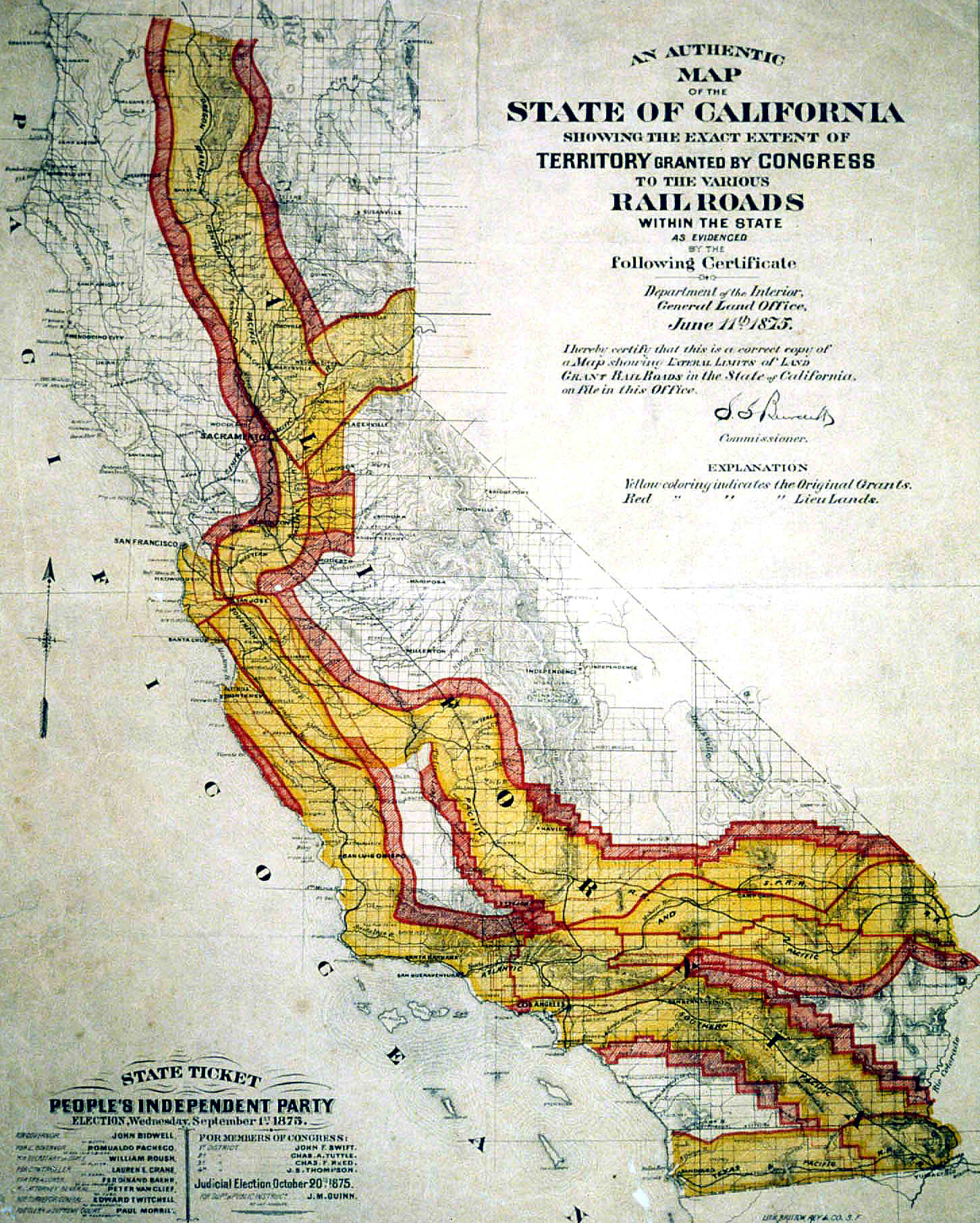
Map
of Congressional land grants to railroads as of 1875, prepared
by the Secretary of the Interior.
Railroads have ruled California politics ever since. The Union
Pacific Railroad still owns more California land than all of its home
owners combined. California's Proposition 13, which curtailed the
proprety tax, actually increased home owners' share of the tax
burden by dramatically reducing taxes for the Union Pacific and other
land-rich corporations. It also launched Henry George on a crusade that
would make him "the prophet of San Francisco," the most famous American
reformer of the 1880s, beginning with the book, Our Land and Land Policy. Minnesota was the nexus for J. J. Hill's Great Northern Railway. Hill is ballyhooed
by conservative libertarians as an example of free enterprise
railroading for building the only transcontinental railroad that took
no public money, got relatively few land grants, and never went
bankrupt. However, he got his start buying earlier railroads which had
gotten public money and large land grants, and which had gone bankrupt.
(He bought them out of bankruptcy.) His railroad went
transcontinental in 1893, after the country had been shocked by
previous abuses and had turned decidely anti-railroad. Hill employed a
"swarm of lobbyists" in St. Paul, urging the state legislature not only
to grant rights of way to his railroad, but to block rights of way to
other railroads. He was also in partnership with J. P. Morgan, head of
the notoriously corrupt Pennsylvania RR. Whether credit belongs
to Hill, to a change in national mood, or to the good sense of the
people of Minnesota and their leaders, the Great Northern shows
that a transcontinental railroad would have been built within a
reasonale time without the massive massive subsidies that went to the
Union Pacific. OhioOhio is probably the most interesting
state of all, due to Cleveland's "trolley wars" between two political
giants who were also Cleveland's two largest trolley millionaires.
Nowhere was the battle for against private streetcar franchises as
notorious as it was in Cleveland. Mark Hanna was the consummate salesman, negotiator and political operative.
He dominated the Ohio state political machine as its recognized "boss"
and became nationally famous for managing McKinley's successful
Presidential campaign. Hanna raised unprecedented campaign funds by
villainizing William Jennings Bryan and appealing to banking and other
monopoly interests who feared Bryan's monetary reforms. Getting streetcar franchises for himself was consistent with Hanna's idea of politics for profit. Tom
Johnson, on the other hand, was an experienced streetcar
superintendent and innovator with little interest in politics. He had
invented the "Johnson Farebox,"
which became the national standard for streecars for well over half a
century. His other inventions included steel streetcar rails that
greatly outlasted the iron rails everyone had been using, flush-laid
tracks that were much easier for wagons to cross, a
submerged-cable
system for on-street cable cars, free transfers for users of multiple
streetcars and buses, and, believe it or not, the first
magnetic levitation system. (He sold his maglev patents to General
Electric.) After
taking over a struggling line in Indianapolis, improving management and
making it profitable, Johnson thought he could do well running
streetcars in Cleveland, which "had eight differentstreet
railroad
companies "owned by bankers, politicians, business and professional men
who had been successful in various undertakings, but without a street
railroad man in the entire list." Mark Hanna, politically quashed
Johnson's bid for a franchise to an userved neighborhood in 1879, and
taught the twenty-five-year-old Johnson the importance of political
connections. Johnson bought out a troubled line in Cleveland and
proceeded to battle with Hanna. Johnson and Hanna eventually emerged as
the owners of Cleveland's only two remaining street railway companies,
but Johnson held 60% of the business to Hanna's 40%. He eventually
found allies in Hanna's partners, and consolodated everything into one
company, with Hanna's influence greatly diminished. [My Story, Chapter 9] The Johnson Company had also acquired franchises in St.
Louis, Detroit and other cities, and had built two steel mills and two
company towns. Between franchise monopolies, patent monopolies and land
speculation, Johnson had become one of America's youngest
multi-millionaires. This would have been just another contest between monopolists if Johnson had not read Social Problems and then Progress and Poverty,
both by the reformer Henry George. George's writings convinced Johnson,
his partner Arthur Moxham and his lawyer L. A. Russell, that the
Johnson Company's fortunes were based largely on the exploitation of
privilege and greatly exceeded his contributions to society. Johnson
became George's biggest financial backer and an outspoken advocate of
land value tax and the municipal ownership of public utilities,
including streetcar lines. He then entered politics, as an "anti-monopolist monopolist," repudiating the privileges from which his own fortunes derived. He served in Congress from 1891 through 1895, and as mayor of Cleveland from 1901 through 1909. People
who follow US national politics today might get an idea of how
different these two rivals were from modern figures who emulate them.
Republican operative Karl Rove has described Hanna as his personal role
model, and Democratic congressman Dennis Kucinich has said the same of
Tom Johnson. http://home.comcast.net/~zthustra/pdf/a_program_for_monetary_reform.pdf
transfers, |
Navigation
We Provide
How You Can Help
- Research
- Outreach
- Transcribing Documents
- Donating Money
- Training for Responsibility
Our Constituents
- Public Officials
- Small Businesses
- Family Farms
- Organic Farms
- Vegetarians
- Labor
- Real Estate Leaders
- Innovative Land Speculators
- Homeowners
- Tenants
- Ethnic
Minorities
- Ideological Groups
Fundamental Principles
- Decentralism and Freedom
- Focusing on Local Reform
- Government as Referee
- Government as Public Servant
- Earth as a Commons
- Money as a Common Medium
- Property Derives from Labor
Derivative Issues
- Wealth Concentration
- Corruption
- Bureaucracy
- Authorities
- Privatization
- Centralization
- Globalization and Trade
- Economic Stagnation
- Boom-Bust Cycles
- Development Subsidies
- Sprawl
- Gentrification
- Pollution and Depletion
- Public Services
- Transportation
- Education
- Health Care
- Retirement
- Wages
- Zoning
- Parks
- Shared Services
Blinding Misconceptions
- Orwellian Economics
- Corporate Efficiency
- Democracy vs. Elections
- Big Government Solutions
- Founding Fathers
- Politics of Fear
- Politics of Least Resistance
- Radical vs. Militant
- Left vs. Right
- Common vs. Collective
- Analysis vs. Vilification
- Influence vs. Power
|
